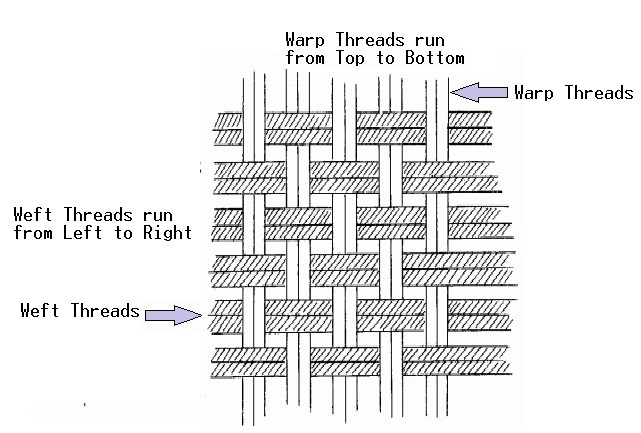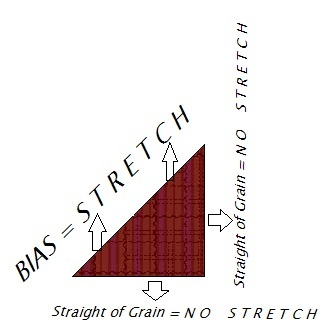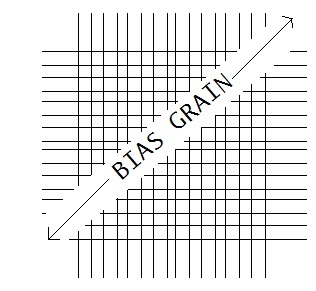What is Straight of Grain, Bias Grain etc?

No matter what genre of quilting you might be using, the issue of Warp and Weft threads, Selvedge Edge, Straight of Grain, Crosswise Grain, and Bias edges will occur at some time during the creating process.
There is often confusion surrounding these terms and misunderstanding when using techniques that include Straight of Grain or Bias edges. Consequently, the misunderstanding can cause unintentional stretch in quilt blocks that in turn cause misshapen quilt tops. So let’s get to the basic explanation of the terms.
What is Warp and Weft in fabric?
All patchwork fabrics are woven from threads that create a grid like appearance. The warp thread runs top to bottom and the weft runs right to left.
Both the warp and the weft behave differently when woven into fabric.
The warp thread (top to bottom) is usually the stronger of the two and is least likely to stretch out of shape. When fabric is cut on the “Warp straight of grain” the cut is in the same direction as the warp threads and hence the fabric edge keeps its strength.
The weft thread (right to left) is not as strong as the warp thread, and when cut on the “Weft Straight of grain”, the cut is in the same direction as the weft threads and hence the fabric edge keeps it’s strength but is not as strong as the warp edge
What is the Selvedge Edge and the Straight of Grain?
The selvedge edge is the dense, tightly woven edging that is found on either ends of the woven fabric and is made by the warp threads turning back on themselves to begin weaving the next row. The straight of grain and the Selvedge Edge run in the same direction as the Warp threads. Many patterns require templates to be placed on the straight of grain. Because the Selvedge Edge is an indication of the Straight of Grain and as long as the selvedge edge is present, it is easy to know what direction to lay the templates. But what if the selvedge edge is missing?
There is a simple test you can take to distinguish the selvedge edge or straight of grain even when it is missing. Place the fabric top and bottom edges between your two thumbs and gently stretch outwards. Make a mental note of just how much the fabric stretches.
Using the same fabric, place the fabric left and right edges between your two thumbs and gently stretch outwards. Make a mental not of just how much the fabric stretches. The side that stretched the least is the edge that the selvedge would have been found on and is the Straight of Grain of the fabric.
What is a Crosswise Grain and Bias Edge?
Image Source
The crosswise grain is a description of the grain that runs at a 45 degree angle to the warp and weft threads in our patchwork fabric. Bias edges that sit on the Crosswise Grain are made when a template is cut at a 45 degree angle to the weft and warp. Bias edges common to shapes such as triangles and organic shapes like ovals, circles and leaves etc.
Because the cutting is being made across the warp and weft threads, the bias edges are extremely weak and have little strength to hold their shape. Stretching of the bias edge is very easy to do, even when pinning the bias edge or sewing it with a sewing machine and can cause a great deal of angst when attempting to create a symmetrically even block.
It is advised to avoid sewing bias edges together wherever possible; because once the fabric is stretched it is very difficult to remedy the situation. Luckily there have been techniques designed to sew bias edged shaped templates together, and avoiding stitching bias edges together. Half Square Triangles are a good example of sewing bias edges together and avoiding the stretching issues that come with cutting bias edges.

Related Articles
Editor's Picks Articles
Top Ten Articles
Previous Features
Site Map
Content copyright © 2023 by Judie Bellingham. All rights reserved.
This content was written by Judie Bellingham. If you wish to use this content in any manner, you need written permission. Contact Judie Bellingham for details.







